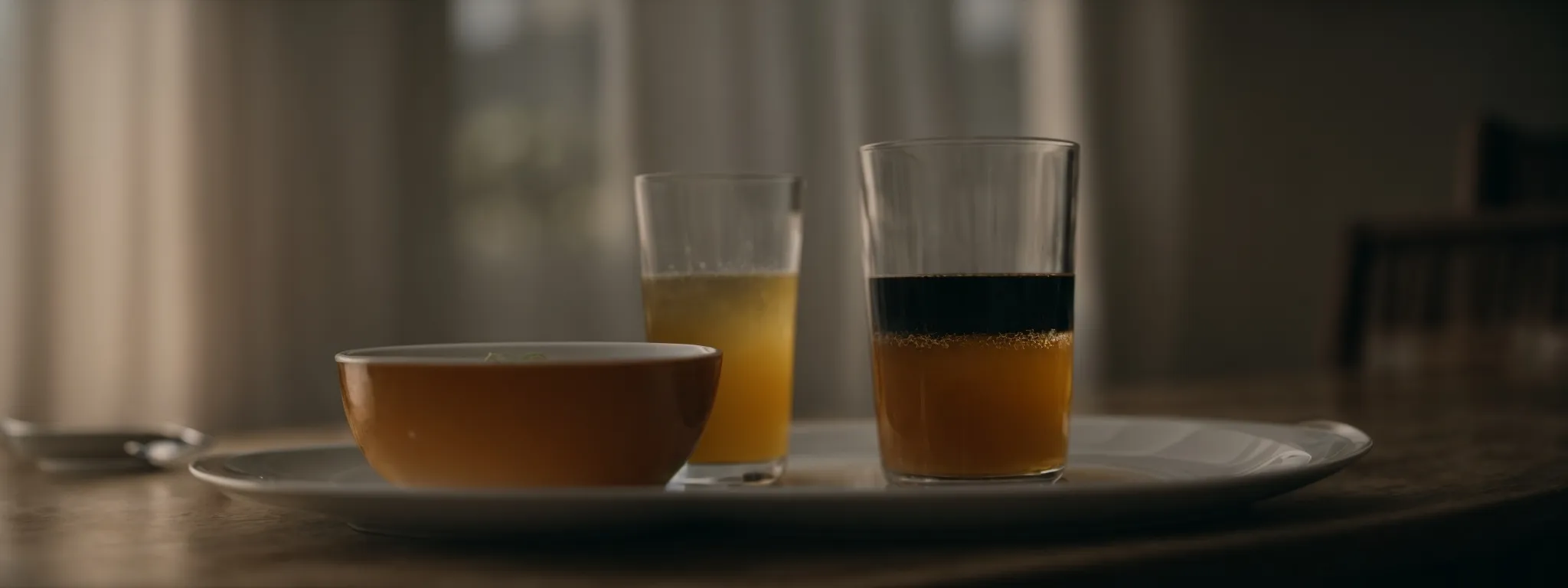
Effective Guidelines for Healing After Wisdom Teeth Extraction
Embarking on the journey to remove wisdom teeth often begins with a necessary visit to a specialist, perhaps someone as aptly named as Dr. Wisdom Teeth himself. But as routine as this extraction may be, it's not without its risks — the prospect of nerve injury, however small, lends a gravity to the decision that shouldn't be underestimated. It's why the wisdom of the American Association of Oral and Maxillofacial Surgeons can be as comforting as a bowl of cottage cheese to a tender post-operative mouth: their guidelines emphasize safe, effective recovery protocols. Choosing the right self-care routine post-surgery can make all the difference in healing time and overall comfort. Keep reading to discover the best approaches to navigate through your recovery with ease and minimal discomfort.
Key Takeaways
Rest and Gentle Nutrition Aid the Healing Process After Wisdom Teeth Removal
Proper Oral Hygiene and Avoiding Certain Foods and Activities Can Prevent Complications
Gradually Reintroducing Activities and Solid Foods Is Essential for a Smooth Recovery
Vigilance in Monitoring for Complications Like Dry Socket Is Necessary Post-Extraction
Aligning Care Routines With Health Coverage Helps Manage Recovery Efficiently and Cost-Effectively
Self-Care Advice

Embarking on the recovery journey after having your wisdom teeth extracted, I've found that managing your daily activities and oral hygiene diligently can significantly influence the healing process. It's tempting to resume life as usual, but taking it slow is key. My dentist emphasized that rest is not optional—it's a necessity to allow the body to heal and to reduce the risks of complications such as trismus, or the tightness of the jaw muscles. Adhering to prescribed medication schedules, including any antibiotic treatments, is not just about managing pain—it's about preventing infection at the extraction site too. And while my cravings for a thick, creamy milkshake had to be navigated cautiously to avoid dislodging the blood clot vital for healing, I learned that gentle nourishment can be both comforting and conducive to recovery. Maintaining a soft diet and being meticulous with oral hygiene without disturbing the blood clot ensures that each day brings my mouth, and especially the area where the wisdom tooth once was, closer to feeling normal again.
Activity
Post-operation, I discovered that the key to a successful recovery is not only about staying horizontal on the couch; it involves moderate movement. A walk to the kitchen or a slow shuffle to the mailbox can be as restorative as resting itself: gentle activity enhances circulation and can help speed up healing, assuming you don't strain yourself. Of course, I made sure to avoid any stress on the knees or other joints since excessive physical exertion can lead to increased bleeding or swelling in the affected oral area.
Intertwining a healthy diet with your recuperation regime not only aids the body in general healing but is specifically beneficial after a wisdom teeth extraction. Including foods rich in vitamins and minerals promotes effective recovery, particularly those packed with vitamin C and calcium which are known to support tissue regeneration and bone health. It's not just about nutrition for general well-being—it's about giving the body the resources it needs to adhere to the anticipated wisdom teeth extraction recovery time. visit Dr. Wisdom Teeth
Staying adequately rested, but incorporating light walks to promote circulation
Focusing on knee safety to prevent unnecessary stress on the body during recovery
Adhering to a nutrient-dense, soft food diet to foster quicker healing
Ensuring proper nutrition to support tissue regeneration and tooth socket healing
Oral Hygiene
After the wisdom teeth are removed, the gaping sockets serve as a stark reminder of where once a molar ruled. My immediate task was to keep these areas clean, yet I had to exercise caution to prevent disrupting the delicate healing tissues. I switched to a soft-bristled toothbrush and began rinsing with saline solutions to flush out debris that might have settled in the recesses where my molars had been.
Surprisingly, my dentist mentioned that certain medications, including some types of birth control and prostate medications, could affect oral health and potentially the healing process. I learned to discuss my entire healthcare regimen, not just oral care products—like avoiding mouthwashes that contain alcohol or harsh chemicals—but to consider the effects of all medications, even something as innocuous-seeming as a plastic retainer that I used at night, which needed to be impeccably clean to prevent infection.
Now, as you've mastered the self-care routine for a swift recovery, let's shift gears and tackle the burning questions about resuming work and driving. Get ready to take control of your daily life once again with confidence!
Working and Driving

Returning to work post-extraction felt premature without understanding how my body would respond to activities that required focus, like driving. I gave myself a few days to monitor my pain levels and response to analgesics, which turned out to be a wise decision. The medication, although effective, induced a slight dizziness at times, making operating a vehicle or intricate tasks at work less than advisable.
My typical morning routine of a brisk walk to the workspace was replaced with a leisurely pace, as exerting too much pressure too soon could pose a risk for thrombosis within the healing socket. I had to educate colleagues and friends that recovery was not an overnight phenomenon, emphasizing the importance of easing back into the daily grind with the caution my physical state demanded.
I learned that smoking, a habit I was considering kicking, was particularly detrimental to healing after wisdom tooth extraction. My dentist highlighted that the suction movement when inhaling could invite complications, including the dreaded dry socket. It underscored an opportunity for me to embrace healthier lifestyle choices while honoring the needs of my recuperating gums and jaw.
Adjustments extended to my diet as well, where apple sauce became a staple; it was a soothing alternative to the crunchy snacks I was accustomed to. Its smooth consistency was kind to my tender gums and the vitamins supported my overall recovery—yet another simple, but significant, shift in my post-surgical care routine.
With newfound confidence, you've navigated work and conquered the daily commute. Let's gear up for the next chapter – reclaiming the vibrant rhythm of your everyday life.
Returning to Normal
As the days progressed, the once opaque guidelines for post-surgery care began to crystallize into a routine, reminiscent of learning to use a syringe for the first time—I became adept at administering just the right amount of care to my healing gums. I liken this to someone mastering the placement of contact lenses. There's an initial period of discomfort and uncertainty, followed by a sudden ease where the process becomes second nature.
My overall health improved apace with my oral healing, much like one's breathing becomes more natural and less noticeable as the body heals from the disruption. It's a seamless recovery that you don't fully appreciate until you're on the other side of it, much like when permanent teeth replace deciduous ones during childhood.
Just as one would measure appendix recovery time after surgery, I tracked the milestones of my own convalescence. With an avid interest, I noted each improvement, no matter how small, marking a return to normalcy:
Reduction in swelling and discomfort with each passing day
Gentle reintroduction of tougher foods into my diet
The careful discontinuation of pain management meds
Resumption of my normal fitness and social routines
I took each advancement in stride, careful not to overstep and disrupt the careful balance my body was striving to maintain. This experience has imbued me with a deeper understanding of the body's incredible capacity to heal, a testament to the resilience we often take for granted.
The journey to normalcy begins anew, a testament to your body's resilience. Brace yourself as we tackle the critical aspect of pain management, a step that shapes the road to recovery.
Pain Management
Throughout my journey of wisdom tooth extraction healing, I've realized that consistent oral hygiene is not only about keeping your mouth clean; it's also about pain management. After the procedure, the mouth can be sensitive, and maintaining a regime of gentle yet thorough cleaning has helped minimize discomfort.
One unpleasant side effect I encountered was a shift in my perception of taste. The various gauzes and medications seemed to leave an odd flavor in my mouth, but I found that regular saltwater rinses not only promoted oral hygiene but gradually restored my sense of taste to its former glory.
Pain management, crucial to the recovery process, often requires medication which can unfortunately trigger nausea. Initially, I struggled with this issue, but I learned to manage it by taking my medications with a small amount of food and staying hydrated—an effective strategy recommended by my healthcare provider.
Maintaining stringent oral hygiene as a form of pain management
Utilizing saltwater rinses to combat changes in taste post-extraction
Combating nausea by accompanying pain medication with sustenance
Over time, the healing process has shown me that understanding your body's needs is paramount. Adapting pain management techniques to suit personal tolerance levels was integral in navigating the sensitive post-operative days with the goal of minimizing side effects and promoting swift recovery.
Transitioning smoothly from pain management, the road to recovery brings us to a delightful milestone—nourishing the body. Let's delve into the dos and don'ts of eating and drinking after wisdom teeth extraction.
Eating and Drinking

After the extraction, my stomach churned with the remnants of the general anaesthetic, so my meals needed to be chosen carefully. I introduced light and easily digestible foods to my diet, consciously avoiding any overly rich or heavy meals that might necessitate the use of a laxative, which was the last thing my sensitive system needed at that moment. The clarity in choosing the right foods helped ensure that my stomach remained as settled as my healing gums.
I quickly realized that now wasn't the best time to indulge in my favorite spicy dishes, as certain foods could compromise my recovery. Anything that could act as an irritant was off the menu—just as I wouldn't plunge into a hot tub while nursing my body back from a wisdom tooth extraction. I pushed patience over preference, focusing on meals that would foster healing without additional inflammation or infection risk.
Drinking plenty of fluids is crucial, but when it came to alcohol or excessively hot drinks, I was as cautious as I would be about taking a swim with an open wound. An antiseptic mouthwash was part of my regimen, prescribed by the dentist, but I was instructed to avoid anything that could irritate the wound or disrupt the delicate process of healing, much like how carefully one would manage acl recovery time after surgery.
Abstaining from using a straw wasn't something I had anticipated, but it proved to be vital. The sucking motion has the potential to dislodge the blood clot essential for healing—a risk not worth taking. It was all about being meticulous, honoring the small details in care that would amount to a triumph in the long run, bringing my oral health back to its optimal state.
Revealing what lies beyond the mealtime adjustments, we step into a vital stage of the journey. Healing takes center stage as we delve into post-operative care following wisdom teeth extraction.
After Wisdom Teeth Removal
In the wake of my wisdom teeth removal, I was acutely aware of my body's signals. Monitoring my vital signs became as routine as brushing my teeth, ensuring everything was trending toward a healthy recovery.
Curiosity about the procedure led me to inquire, "How long does a wisdom tooth extraction take?" In experience, the surgical part didn't last long, but the act of healing is a more prolonged and personal marathon.
Complications are a concern, so any signs of persistent bleeding warrant an immediate call to health care professionals. It's crucial to distinguish between normal post-operative oozing and something that may require medical attention.
Women should be mindful of hormonal fluctuations; I wondered if breast tissue changes could somehow influence oral healing. Although no direct connection was made, I remained vigilant, checking in with my dentist and doctor to cover all aspects of health:
Having addressed the immediate aftermath of wisdom teeth extraction, let's shift focus to the recovery journey. Mapping out the timeline, we'll chart what to expect as your body heals.
Wisdom Teeth Removal Recovery Timeline

As I sat in the surgeon's office, poring over the post-operative care instructions, I became acutely aware of the detailed recovery timeline laid before me. Breaking it down, the initial 48 hours post-extraction demanded strict adherence to rest, a diet of soft foods like pudding, and meticulous monitoring of any changes in blood pressure or severe discomfort. These precautions were paramount to minimize the risk of complications and jumpstart the healing process.
The sight of my favorite flavor of pudding became a comforting constant as the days progressed. Not only was it gentle on the extraction sites, but it also served as an easy-to-consume option that required minimal jaw movement, allowing the incision sites to heal without the strain that comes from the action of typical chewing. It was a small, yet significant way to foster tissue repair without feeling completely deprived of the joys of eating.
A few weeks into the healing journey, my surgeon's advice to gradually re-introduce more solid foods resonated strongly with me. My patience was tested, as I had to resist the urge to enjoy things like chewing gum, which could potentially disrupt the delicate tissue rebuilding at the extraction sites. The thought of causing any setbacks to my recovery spurred me to maintain my discipline, drawing on the successful healing thus far as a motivator.
Consistently keeping tabs on my tissue restoration proved to be a valuable part of my recovery regimen. Visits to the surgeon for follow-ups became milestones that highlighted the resilient nature of my body's healing capabilities. Each symptom-free day brought with it gratitude for the professional guidance that navigated me through the nuances of the healing timeline, sans any major hiccups.
The road to recovery after wisdom teeth extraction can feel like a marathon, but it doesn't have to be a solitary one. Let me arm you with some savvy strategies that could turn that careful jog into a more comfortable sprint.
Tips to Speed Up Post Wisdom Teeth Healing
After my wisdom teeth extraction, vigilance became my close companion, especially when my dentist mentioned "alveolar osteitis," more commonly known as dry socket—an ailment you want to steer clear of at all costs. To reduce the flare-ups of inflammation, I made ice packs my new best friends, judiciously applying them in intervals as instructed. They became an integral part of my routine, much like checking my mailbox each day.
Interestingly enough, when discussing recovery tips with my dentist, the conversation steered toward my regular use of dental floss and toothpaste. We scrutinized the ingredients of my usual brands, ensuring nothing therein would irritate the tender sites in my mouth. It turned out some beloved products had to be set aside temporarily for gentler varieties, a minor switch that promised smoother sailing on my healing voyage.
Ensuring the proper healing of my gums meant reassessing even routine habits; I was careful to gently brush around the extraction sites, avoiding vigorous motions that could disrupt the healing clots. This proactive measure to prevent additional visits to the dental chair was also a cost-effective strategy, keeping in mind my Medicare coverage and the importance of managing healthcare expenses smartly:
Regular application of ice packs to diminish inflammation
Careful evaluation and selection of dental floss and toothpaste
Gentle brushing technique to safeguard against clot disturbance
Cost-effective self-care aligned with Medicare considerations
Through the recovery period, I aligned my oral care routine with guidance that meshed well with my Medicare benefits. It was reassuring to know that if complications arose, my coverage would assist, but my goal was to avoid issues like alveolar osteitis by adhering to the careful plan established by my dentist. No stern reminders were necessary for an issue of this gravity—my commitment to a swift recovery was hardly something that needed enforcing.
Conclusion
Adherence to effective guidelines significantly enhances recovery after wisdom teeth extraction, minimizing the risk of complications like infection or dry socket. Meticulous oral hygiene and a carefully curated diet support both pain management and tissue healing. Gradually reintroducing activities and regular monitoring of symptoms are paramount for a smooth transition to normalcy. Ultimately, a personalized and diligent post-operative regimen, informed by professional advice, ensures a swift and successful healing process.
